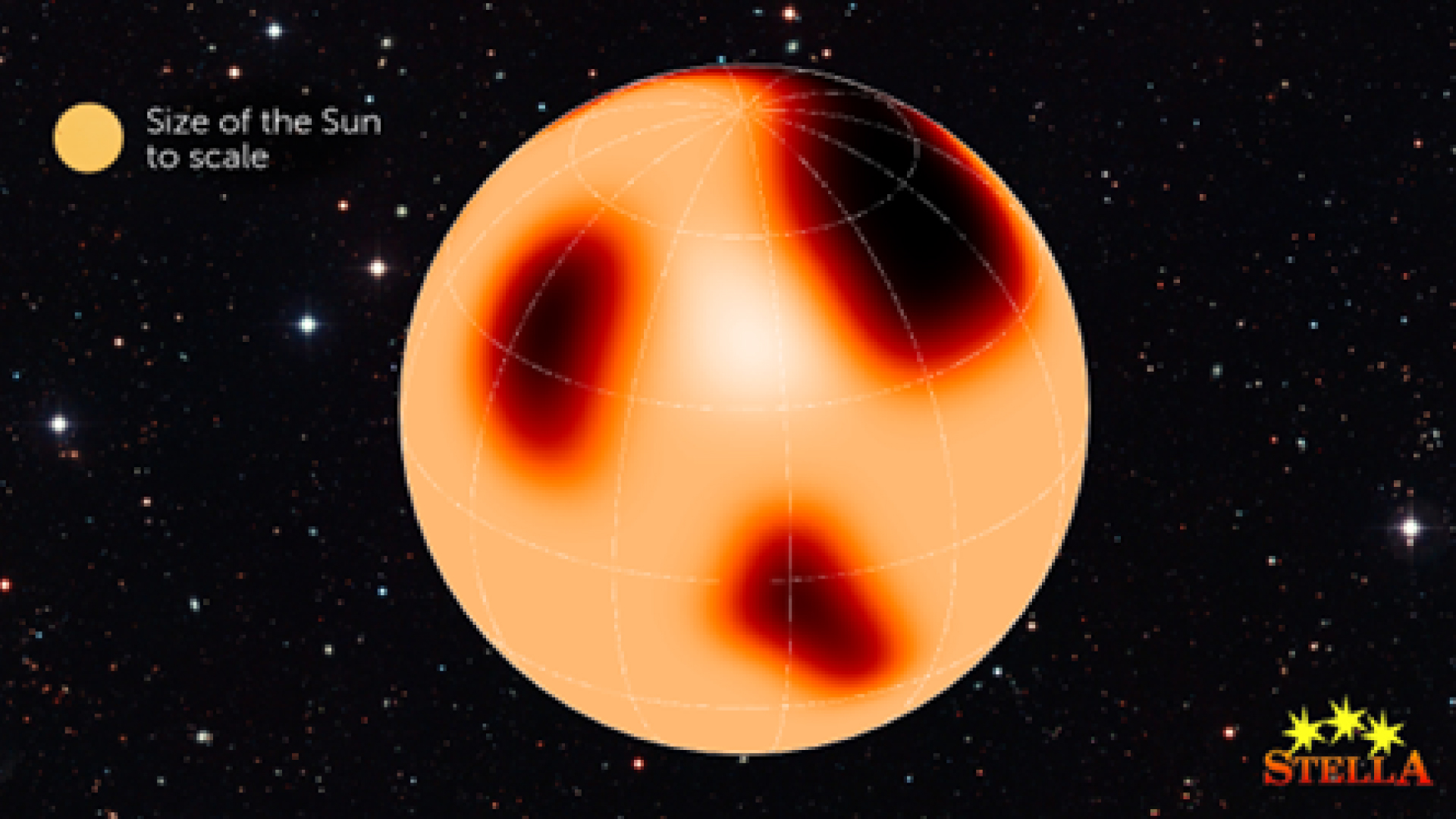Starspot activity of the red giant XX Trianguli indicate non-periodic, chaotic dynamo
In a groundbreaking study now published in Nature Communications, researchers from the Leibniz-Institut for Astrophysics Potsdam (AIP) and the HUN-REN Research Centre for Astronomy and Earth Sciences (HUN-REN RCAES) have reconstructed the temporal changes in the distribution of surface spots on the red giant star XX Trianguli. The research is based on a unique series of spectroscopic observations carried out by the STELLA robotic observatory over 16 years.
"Sunspots are the most well-known manifestations of solar magnetic activity, which, together with many other phenomena, such as solar flares or the solar cycle, can be linked to the dynamo mechanism operating inside the Sun. Starspots are phenomena similar to sunspots, but on the surface of distant stars. However, usually we cannot observe the surface of stars directly, therefore we applied an indirect tomographic technique called Doppler imaging to the data of XX Tri." – explains Dr. Zsolt Kővári, scientific advisor at HUN-REN RCAES, the Hungarian participant of the research team.
"The large-amplitude variations in the brightness of the red giant XX Tri have been observed before, so it was also known that the variations were caused by dark spots, coming in and out view as the star rotates around its axis in 24 days. These spots are even larger than the entire surface of our Sun – which is why XX Tri has been dubbed “the most spotted star in the sky.”

Snapshot image of the surface of the red giant XX Trianguli. The size of the Sun is shown for comparison. Credit: HUN-REN RCAES/Zs. Kővári, MOME/Á. Radványi, AIP/K. Strassmeier
The researchers used more than 2,000 high-resolution spectra collected over 16 years with AIP’s STELLA robotic telescopes in Tenerife, an unprecedented amount of homogeneous spectroscopic data from a star. STELLA robotic observatory, whose principal investigator is Prof. Klaus G. Strassmeier, lead author of the study, is AIP's `home-made observatory’: the twin telescopes were designed, built and operated remotely in Potsdam. From the data, 99 time-series Doppler images were reconstructed, showing the spot evolution on the stellar surface between 2006 and 2022.
One of the main findings of the study is that the surface changes of XX Tri do not show Sun-like magnetic cycles, based on which the authors conclude that the star's dynamo is non-periodic in nature, most likely chaotic.
Data visualization experts at Moholy-Nagy University of Art and Design Budapest (MOME) created a spectacular movie from the Doppler images.
This study is the first to demonstrate how the huge starspots cause a tiny displacement of XX Tri in the sky, which appears virtually as a point source when observed from Earth. The reason for this is that while the photocenter of a homogeneous (=unspotted) stellar disk is the same as the geometric center of the star, huge starspots on the stellar disk repel the photocenter in the opposite direction to the spots. In the case of XX Tri, which is 630 light-years away, the photocenter of the stellar disk can shift by up to 10% of the star's radius relative to the geometric center, causing an apparent displacement of 24 micro-arcseconds in the celestial position of the star (the diameter of a hair at a distance of 1000 km). However, with the help of the Gaia astrometric space observatory, even such small displacements can now be measured. This is similar to the expected astrometric displacement caused by a Saturn-mass planet in a one year orbit around a Sun at about 300 lightyears distance. Therefore, separating the effects of spots and exoplanets seems very challenging, if not impossible, in particular in cases of similar periodicity, the researchers conclude.
Observations of XX Tri with STELLA are continuing, so according to Dr. Kővári, the new data may reveal further details about the star's dynamo operation.

